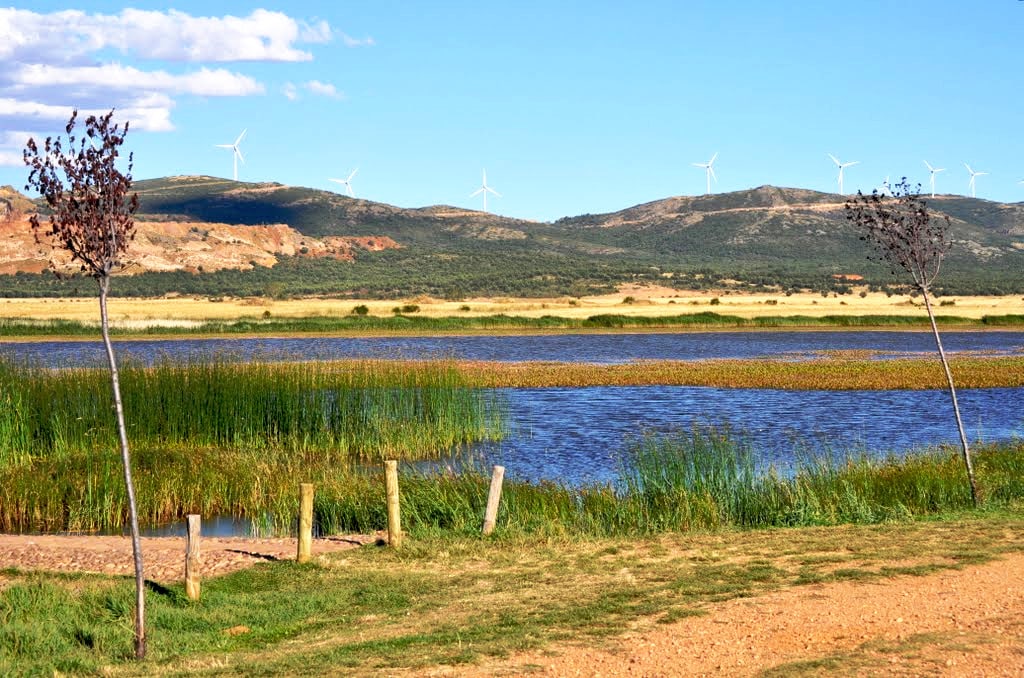Setiles Lagoon
Beautiful lagoon, very close to Gallocanta, as well as birdwatchers.

Dirección
Setiles Lagoon
GPS
40.726973699572, -1.6085958747858
Setiles Lagoon
Its name does not leave much to the imagination, it is a beautiful lagoon and it is located in the immediate vicinity of the village of Setilesvery close to the town centre, although it can also be known as the Los Majanos Lagoon. To access it, from the Setiles Town CouncilWe walk along Laguna Street, which leads us to the path of Los Prados, which in a few metres leads us to the small recreational area located at one end of the lagoon.
One of the curiosities of the Setiles lagoon is that it is high up. You have to go up a small hill and climb the path until you reach the top of the hill, where there is a small depression in which it sits. This depression is partly responsible for collecting and "damming" the water from rainfall, as well as any possible thaws. This is where all the precipitation that falls on the western face of Sierra Menera (those on the eastern side go towards the Mediterranean), which later will go to the Gallo river and from there to the Tagus.
Its size is not exuberant, but its flow can increase a lot after rainy springs and cold winters. Another characteristic of the Setiles lagoon is that its small size has no influence whatsoever on the number of species of birds that gather here, thanks in part to its proximity to the Gallocanta lagoonA paradise for large migratory birds linked to the aquatic environment. That is why, in the Laguna de los Majanos, at the right times of the year, we can enjoy a great variety of birds that will delight our visitors. birders and birdwatchers, such as mallards, a multitude of ducks, little grebes, marsh harriers, booted eagles and the beautiful yellow wagtail.
Physically, we can say that the lagoon is split in half. It is crossed by a footbridge that divides the waters, acting as a retaining wall to prevent possible overflows in times of high flows, although it has happened many times that this footbridge has been submerged by the amount of water accumulated. In addition, these waters take on a coppery brown, even blackish colour, which is given by the ferruginous compounds present at the bottom of the lagoon, mostly from the extraction of minerals from Sierra Menera in the past.
Finally, although we are not in one of the best known areas of the Molina-Alto Tajo region, the landscape here is marvellous and we can appreciate in all its splendour the impressive landscape of the region. Sierra Menerawhich is home to a multitude of fauna thanks to the landscape resulting from the exploitation of the mines, the Sierra de Caldererosand a bastion of the Señorío de Molina with its Zafra Castlewatchful from its rocky outcrop, or the Sierras de Aragoncillomineral soil, or Sierra Molinawith the Tremedal Mountains in the foreground.



